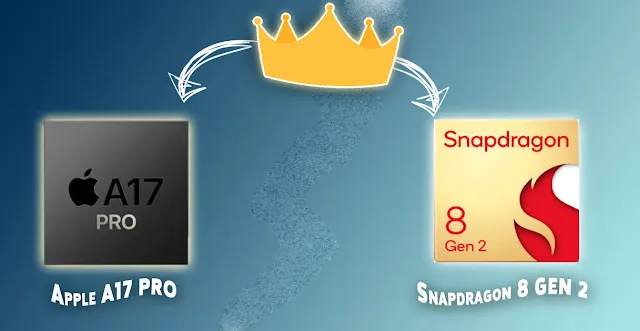Step-by-Step Guide for How to Writing Perfect AI Prompts
 |
| Image Source Credit: Wikipedia |
How to Write Perfect Prompts for AI: A Simple Step-by-Step Guide
In a world increasingly driven by artificial intelligence (AI), communicating effectively with these intelligent systems has become crucial. Whether you're seeking assistance or generating creative content, crafting a clear and precise prompt is essential to ensure that AI understands and fulfills your intentions accurately. In this guide, we'll walk you through a step-by-step process to create perfect prompts that even a 15-year-old can understand.
Step 1: Clarity Is Key
When interacting with AI, clarity is your best friend. A well-defined prompt leaves no room for misinterpretation. Start by identifying your objective - what exactly do you want the AI to do? If you're requesting a creative writing piece, state it directly: "Write a short story." Avoid vague language like "Can you make something up?" that might lead to uncertain responses.
Example 1: Specific Creative Writing Request
- Step 1: Clarity Is Key
- "Write a 500-word short story about a young explorer discovering a hidden cave in a mystical forest."
Step 2: Keep It Simple
Using straightforward language ensures that the AI processes your request accurately. Avoid complex sentence structures, jargon, or technical terms that could confuse the AI or dilute the message. A simple prompt like "Summarize this article about climate change" is far more effective than convoluted phrasing.
Example 2: Simple Information Request
- Step 2: Keep It Simple
- "Summarize the main causes of the Industrial Revolution in 3-4 sentences."
Step 3: Add Context
AI benefits from context just like humans do. If your prompt relates to a specific topic, situation, or context, provide a brief introduction. For example, if you want the AI to generate a recipe, begin with a sentence like "Imagine you're creating a recipe for a healthy breakfast smoothie."
Example 3: Contextual Prompt
- Step 3: Add Context
- "Imagine you're a health expert. Provide tips for maintaining a balanced diet during the holiday season."
Step 4: Divide and Conquer
When tackling complex tasks, break them down into smaller, manageable steps. If your request involves multiple components, provide each step in a separate sentence. For instance, when asking the AI to help you plan a trip, divide it into stages like "Find flight options," "Research accommodations," and "Recommend local attractions."
Example 4: Complex Task Breakdown
- Step 4: Divide and Conquer
- "Find three flight options to Paris for a week-long trip. Research accommodations are within $150 per night. Recommend local attractions and restaurants to visit."
Step 5: Embrace Keywords
Keywords are the AI's compass. Incorporate specific keywords that relate to your request. If you want the AI to create a poem about nature, explicitly mention "compose a poem about the beauty of nature."
Examples 5 and 6: Keywords and Examples
- Steps 5 & 6: Embrace Keywords, Share Examples
- "Create a poem highlighting the beauty of autumn. Here's an example of the style and tone I'm looking for: 'Crisp leaves dance in the breeze...'"
Step 6: Share Examples
To help the AI understand your expectations, provide sample outputs. If you're requesting a business email, give a brief example of the tone and content you're looking for. These examples serve as guides for the AI to follow, improving the accuracy of its response.
Step 7: Avoid Ambiguity
Ambiguous prompts yield unpredictable results. Steer clear of open-ended questions that allow the AI too much room for interpretation. Instead of asking, "What can you tell me about history?" be more specific with "Summarize the causes and outcomes of World War II."
Example 6: Avoid Ambiguity
- Step 7: Avoid Ambiguity
- "Summarize the effects of deforestation on wildlife habitats in South America."
Step 8: Pose Direct Questions
For information-seeking prompts, asking direct questions is effective. If you're curious about a certain topic, phrase your prompt as a question. Instead of "Tell me about famous painters," try "Who are some renowned painters from the Renaissance period?"
Example 7: Direct Question
- Step 8: Pose Direct Questions
- "Who were the key contributors to the field of quantum physics?"
Step 9: Set Constraints
If your request has specific requirements, state them clearly. For instance, if you want the AI to generate a story within a particular word limit, provide that information in the prompt. This ensures the AI tailors its response to your needs.
Example 8: Constraints
- Step 9: Set Constraints
- "Write a 200-word introduction for a blog post about renewable energy. Focus on solar and wind power benefits."
Step 10: Experiment and Refine
Perfect prompts often come through trial and error. Feel free to experiment with different phrasings until you find the one that resonates best with the AI. If an initial attempt doesn't yield the desired outcome, refine your prompt based on the AI's response.
Example 9: Experiment and Refine
- Step 10: Experiment and Refine "Can you provide information about famous inventors?" (Response not as detailed)
- Refined Prompt: "Please list three inventors and their notable contributions."
Final Points
In a world where AI is becoming an integral part of our lives, effective communication with these intelligent systems is paramount. Crafting the perfect prompt is an art that requires clarity, simplicity, context, and precision. By following these ten steps, you can ensure that the AI not only understands your commands but also produces accurate and relevant results. Whether you're seeking information, generating creative content, or seeking assistance, mastering the art of prompt creation empowers you to harness the capabilities of AI to its fullest potential.










